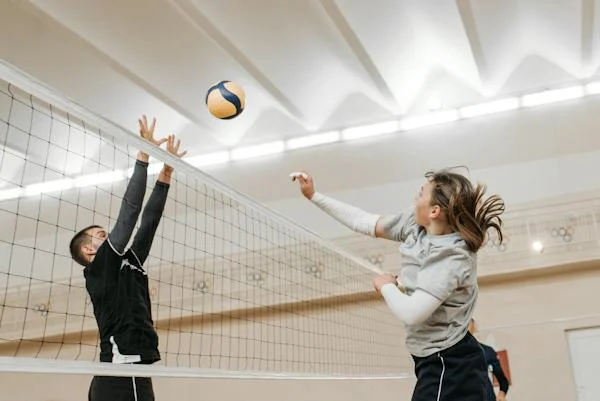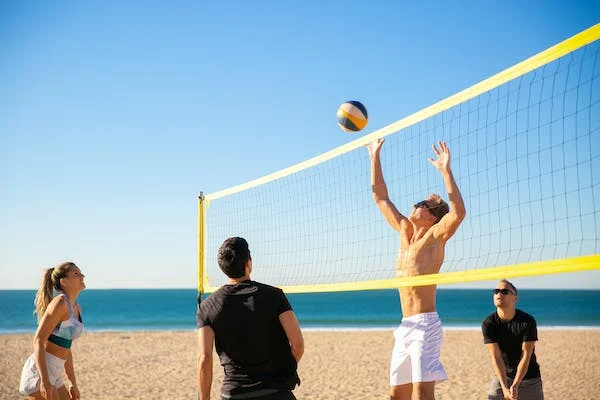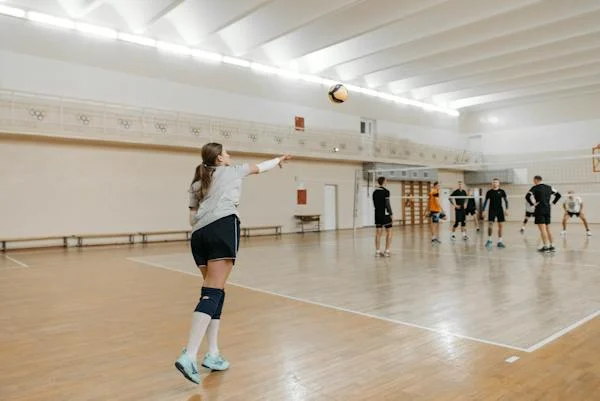Introduction
In volleyball, there’s often curiosity about its rules. A common question that arises is whether a team can score a point without serving. This question interests both experienced players and newcomers because it challenges the traditional understanding of how volleyball scoring functions.
Can You Score A Point In Volleyball When Not Serving?
To understand this topic better, let’s first learn the basics of how scoring works in volleyball. Traditionally, in a standard volleyball match, points are scored when a team successfully grounds the ball on the opponent’s court within the boundaries or when the opposing team commits a fault. However, there’s a prevalent misconception that only the serving team can score points, which leads to confusion among enthusiasts.
Contrary to popular belief, scoring in volleyball isn’t exclusively reserved for the serving team. In fact, any team, whether serving or receiving, can earn a point through various means during a rally. Here’s how it works:
Offensive Plays
When a team executes an offensive play effectively, such as a spike or a well-placed tip, resulting in the ball landing in the opponent’s court untouched or unable to be returned, they score a point regardless of whether they were serving or not. This showcases the importance of skillful attacks and strategic placement in scoring points.
Defensive Errors
If the opposing team commits a fault, such as a double hit, lift, or net violation, during a rally, the non-offending team is awarded a point, irrespective of their serving status. This highlights the significance of maintaining composure and adherence to the rules on the defensive end to avoid conceding points.
Blocking
A well-timed block that deflects the ball back onto the opponent’s side, leading to it hitting the ground, results in a point for the blocking team. This emphasizes the defensive aspect of the game and the impact of effective blocking techniques in scoring points.
Opponent Out of Rotation
If the opposing team is found to be out of rotation, either due to improper positioning or illegal substitutions, the non-offending team is awarded a point. This underscores the importance of organizational discipline and adherence to rotation rules in volleyball.
Penalty Points
In some cases, such as unsportsmanlike conduct or misconduct by the opposing team, penalty points may be awarded to the non-offending team, regardless of the serving status. This reminds us how important it is to play fairly and show good sportsmanship in volleyball.

Understanding the Basics: Serve and Side-Out
The serve initiates each rally in volleyball. A team gains the right to serve when the opponent commits a fault or loses a rally. A side-out occurs when the serving team fails to score a point or commits a fault, leading to the opponent gaining the right to serve.
Scoring Points in Volleyball: Explained
Scoring during Serve
Traditionally, points in volleyball are scored only by the serving team. If the serving team wins the rally, they are awarded a point, and the same player continues to serve. This process continues until a side-out occurs.
Scoring during Rally
During a rally, both teams have the opportunity to score points. Points can be earned through various means, such as successful attacks, blocks, or when the opposing team commits a fault. Contrary to popular belief, a point can indeed be scored by the team not currently serving.
Understanding these aspects makes it clear that scoring in volleyball isn’t just about serving. It involves a mix of offense, defense, following rules, and good sportsmanship. Each rally offers a chance for teams to score, no matter who’s serving, which makes the game more exciting and unpredictable.

Conclusion
In conclusion, scoring points in volleyball is not exclusive to the serving team. While the serve initiates each rally, both teams have opportunities to score points through various offensive and defensive actions.
Watch This Video for the Most Powerful Serves in Volleyball
Can you directly return a serve in volleyball?
No, in volleyball, you cannot directly return a serve. After a serve, the receiving team must pass, set, and then spike or volley the ball back over the net.
Can you return a serve with one hand in volleyball?
Yes, in volleyball, you can return a serve with one hand. It’s often used for a dig or a pass, especially when the ball is coming at an awkward angle or with high velocity. However, using two hands for better control and accuracy is generally preferred.
Is it illegal in volleyball to overhand serve with a fist?
Yes, in volleyball, it is illegal to overhand serve with a closed fist. According to the rules, the serve must be executed using an open hand or hands. Serving with a closed fist is considered a violation, known as a “closed fist serve,” and results in a fault or point for the opposing team.
What is illegal serve in volleyball?
An illegal serve in volleyball refers to any serve that violates the rules set by the sport’s governing bodies. This can include serving the ball into the net, serving the ball outside the designated service area, serving with a closed fist, stepping on or over the service line before contacting the ball, or committing other infractions outlined in the official rules of the game.
Is it legal to serve underhand in volleyball?
Yes, it is legal to serve underhand in volleyball. Underhand serves are commonly used, especially by beginners or those who find it more comfortable or effective. As long as the serve is executed within the rules, such as being made from behind the service line and within the designated service area, serving underhand is perfectly acceptable in volleyball.
